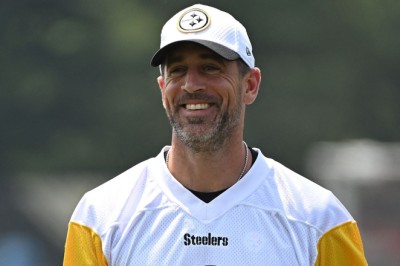Severe hand tremors? Lesioning surgery can fix it in one hour. Here's how it works for Parkinson’s, dystonia patients
Severe hand tremors? Lesioning surgery can fix it in one hour. Here's how it works for Parkinson’s, dystonia patients ByZarafshan Shiraz, New Delhi Feb 12, 2025 06:05 PM IST Read this news in brief form Share Via Copy Link Life-changing treatment for hand tremors in Parkinson’s and dystonia patients: Doctor reveals all you need to know about how lesioning surgery works.
Tremor and dystonia are common neurological conditions that can be seen in patients suffering from various diseases such as Parkinson’s disease or essential tremor or even without these diseases (isolated tremor and dystonia). They often do not respond to medical treatment.
 Tired of shaky hands? Here's how lesioning surgery can restore control instantly!(Image by Pixabay)
Tired of shaky hands? Here's how lesioning surgery can restore control instantly!(Image by Pixabay)
In an interview with HT Lifestyle, Dr Pankaj Agarwal, Head of the Department of Neurology at Gleneagles Hospital in Mumbai's Parel, shared, “Patients suffering from them can be quite debilitated by the sheer severity of the hand tremor, dystonia (or forceful involuntary twisting) of limbs/trunk/neck/whole body and the rigidity and slowness and/or excessive dancing movements in Parkinson's.”
He revealed, “Patients often struggle to perform basic activities like eating, drinking, writing, using a cup or spoon, or using a mobile phone. Lesioning surgery offers renewed hope to such patients and is an alternative to deep brain stimulation (DBS). Patients can reclaim control over their lives with this minimally invasive surgery.”
Dr Pankaj Agarwal answered, “Lesioning surgery involves creating a small, controlled lesion in a highly targeted brain area- whose brain cells are silenced by heat generated by a metal tip that emits radiofrequency waves.”
Dr Pankaj Agarwal explained, “This surgery, which is done with patients fully awake, offers immediate, on-table relief for patients with severe tremors, dystonia and Parkinson's disease. The improvement is often near-complete and actions such as using a spoon fork glass cup or specific instruments (pen/guitar/scissors) are immediately restored to normal.”
He added, “These actions maybe all affected in patients with task-specific dystonia that causes twisting of the hands or fingers when operating a specific instrument. Patients feel an immediate sense of relief during and immediately after the procedure, which is very gratifying.”
“As compared to DBS Deep brain stimulation surgery, the duration of surgery is much reduced (less than an hour) there is also a much shorter recovery time (2-3 days). Costs are also significantly reduced versus DBS and this surgery is hence, much more easily accessible for many individuals who cannot afford deep brain stimulation,” opined Dr Pankaj Agarwal.
Dr Pankaj Agarwal highlighted, “Lesioning surgery is more suited for only/mainly unilateral or non-progressive tremor and dystonia such as writer’s cramp, musicians dystonia, or other forms of isolated dystonia/tremor. Many secondary forms of tremor (eg post stroke/ multiple sclerosis) can also be treated by lesioning surgery.”
He added, “DBS is mainly needed for severe forms of advanced Parkinson’s disease, Essential tremor and generalised Dystonia, where a unilateral lesioning procedure will not be enough to control symptoms. Can both be used? In selected patients, if lesioning surgery is not deemed to be effective anymore due to progression of the disease, it can be always followed by DBS.”
Dr Pankaj Agarwal suggested, “Ultimately the decision to choose one surgery and its timing depends on your treating doctors: movement disorders neurologist and functional neurosurgeon.”
Disclaimer: This article is for informational purposes only and not a substitute for professional medical advice. Always seek the advice of your doctor with any questions about a medical condition.



















Comments
0 comment